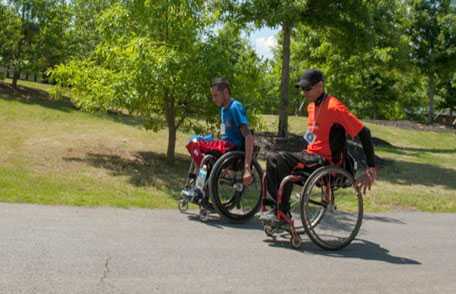Test Your Knowledge of Spina Bifida

How much do you know about spina bifida? Take the quiz to find out and learn about CDC’s work on this condition.
With quality medical care, people with spina bifida can lead full, healthy lives. If you have spina bifida, it’s important to get the facts so that you can make the best possible health care choices.
CDC’s Work
Spina bifida is a complex, often disabling condition that has a tremendous impact on individuals and families, from difficulty finding doctors who specialize in spina bifida, to high health care costs from frequent surgeries and hospitalizations. Centers for Disease Control and Prevention (CDC) projects improve the quality of life and encourage full participation at every age for those with spina bifida.
Spina Bifida Videos

National Spina Bifida Patient Registry
CDC manages the National Spina Bifida Patient Registry. The Registry develops and updates standards of care for people living with spina bifida. This information is then shared with healthcare providers across the country. Data gathered in the Registry comes from children and adults who attend spina bifida clinics. These data document the care they receive, and the outcomes of that care. CDC is the only organization in the United States conducting this broad multi-site clinic research to help people living with spina bifida.
Protocol to Protect the Kidneys in Children with Spina Bifida
Children with spina bifida often have problems urinating, which can lead to kidney damage. CDC scientists and healthcare professionals who treat children with spina bifida designed the first treatment plan to determine which steps work best to protect the kidneys of babies born with spina bifida. The treatment plan is currently being scientifically tested in spina bifida clinics.
Estimating the Number of Pregnancies Affected by Spina Bifida
CDC tracks the number of pregnancies affected by spina bifida in the United States. This way, we can find out if the number is rising, dropping, or staying the same. We can also compare the number of babies born with spina bifida relative to where people live and by other factors. Learn more about spina bifida research >>
Understanding Risks for and Causes of Spina Bifida
CDC works with many other researchers to study what can raise or lower the risk of having a baby affected by spina bifida. This research helps us develop public health policies for prevention. Learn more about the risks for having a baby with spina bifida>>
More Information
More Information
- Page last reviewed: March 7, 2017
- Page last updated: March 7, 2017
- Content source:
- National Center on Birth Defects and Developmental Disabilities
- Page maintained by: Office of the Associate Director for Communication, Digital Media Branch, Division of Public Affairs




 ShareCompartir
ShareCompartir